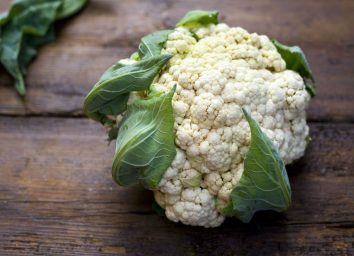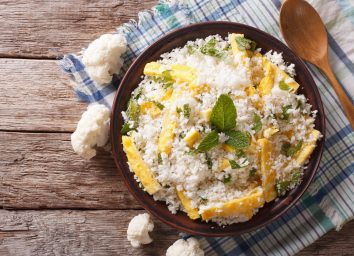What Happens to Your Body When You Eat Cauliflower
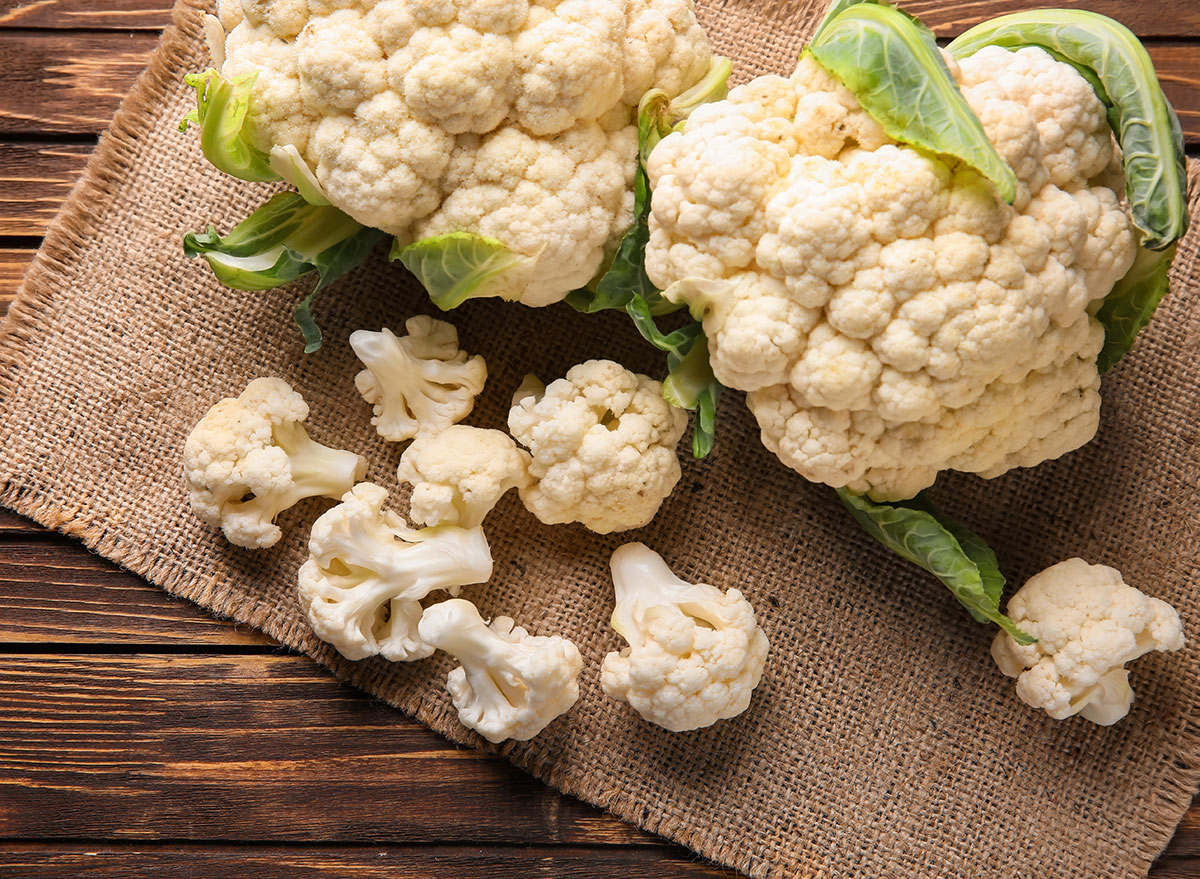
Cauliflower would definitely be considered to be the renaissance vegetable—it can do so many things. It can be made into rice, it can become a pizza crust, turn into mash, and even gnocchi. Plus, it can provide nutrients to your diet. Cauliflower is a mild-tasting vegetable that can take on so many different flavors. Basically, there’s a lot to love about cauliflower, but it’s still important to know about what happens to your body when you eat cauliflower.
While this veggie does pack a nutritious punch, there are a few drawbacks that it’s important to be aware of. Here we’ll outline all the big ideas you need to know about cauliflower so you can get the most out of it while you eat cauliflower, and so you don’t run into any trouble. For the most part, it’s a great vegetable to add to your diet, but it’s important to know all the details. Here’s what to know, and for even more healthy eating tips, be sure to check out our list of The 7 Healthiest Foods to Eat Right Now.
You’ll get a healthy dose of fiber.
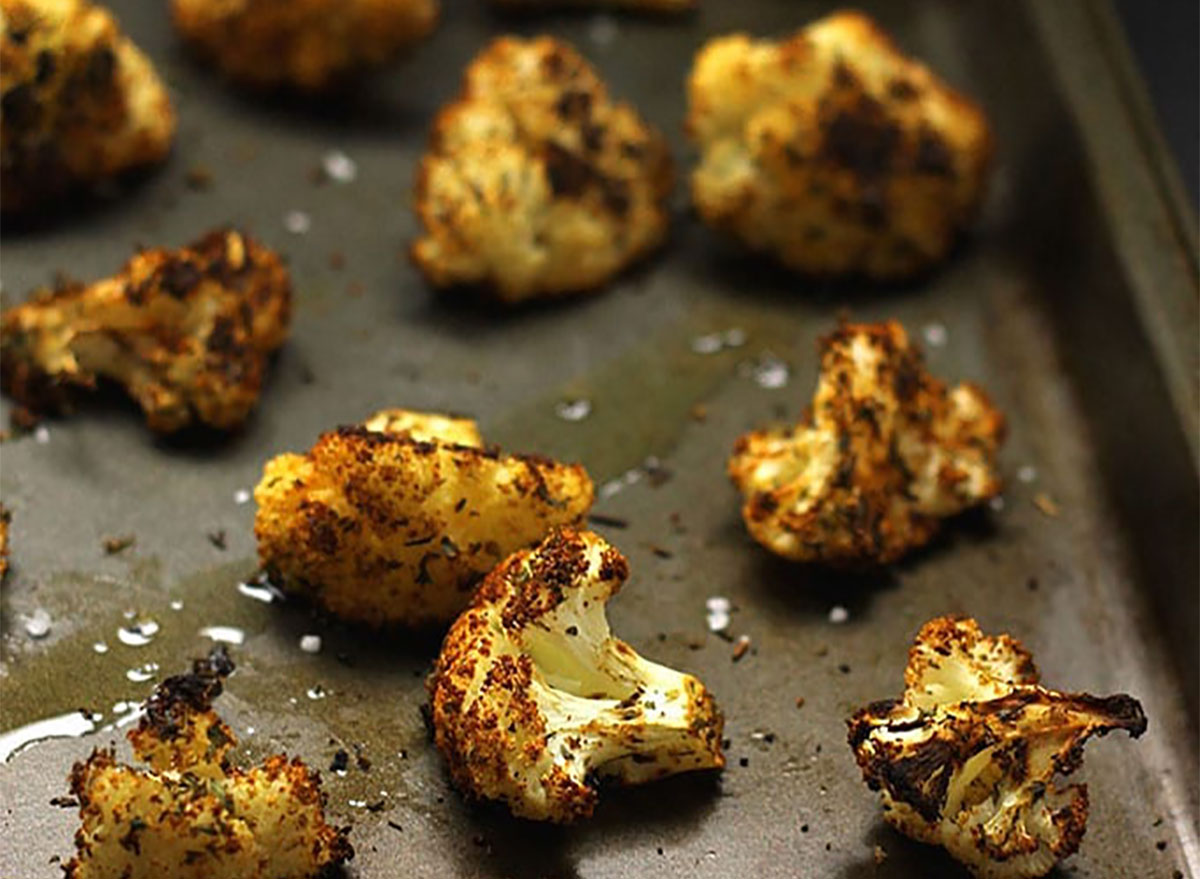
Cauliflower is packed with fiber—2 to 3 grams in 1 cup. This may sound underwhelming, but 3 grams is around 10% of the daily recommended intake of fiber (28 grams per day), all from one little side dish. Fiber is, of course, important to overall health, and can even help you to lose weight.
Not only can fiber help keep your digestive system moving properly, but it also can help reduce inflammation. Fiber even contributes to a lower risk of cancer, diabetes, heart conditions, and more. It also helps fill you up (just like protein), which means you’re less likely to overeat because your belly is full of the healthy stuff.
Here are 9 Warning Signs You’re Not Eating Enough Fiber.
You will be more hydrated.

Cauliflower is made up of a whopping 92% water. That means when you’re eating it, you’re not only getting all its nutrients, but you’re also taking in a lot of water. But how much water is that actually? For one serving of cauliflower (100 grams), you can receive 59 milliliters of water, according to Healthline.
And you know how good water is for you and your health! By using cauliflower as an ingredient in grain-based recipes, you’re adding a lot of nutritional value and helping your body better digest the meal because of the higher water content.
Try cooking with this vegetable using one of these 17 Genius Ideas for Cooking with Cauliflower.
You could feel bloated.

Cauliflower is delicious and nutritious, but it’s also cruciferous. Cruciferous vegetables are great for all the nutrients they contain—like vitamins C, E, and K—but they also contain FODMAPs. FODMAPs are fermentable oligosaccharides, disaccharides, monosaccharides, and polyols, which basically means that these foods are made of short-chain carbohydrates that don’t digest in the small intestine as easily. What happens is they ferment in the large intestine, which not only causes bloating and gas, but studies have also linked FODMAPs to irritable bowel syndrome.
With all that being said, cooking the cauliflower can make it easier to digest. The cooking process breaks down some of those carbs so that your intestines can pass them more easily and absorb what it needs when you eat cauliflower, rather than allowing it to sit and produce gas.
It could affect your medications.
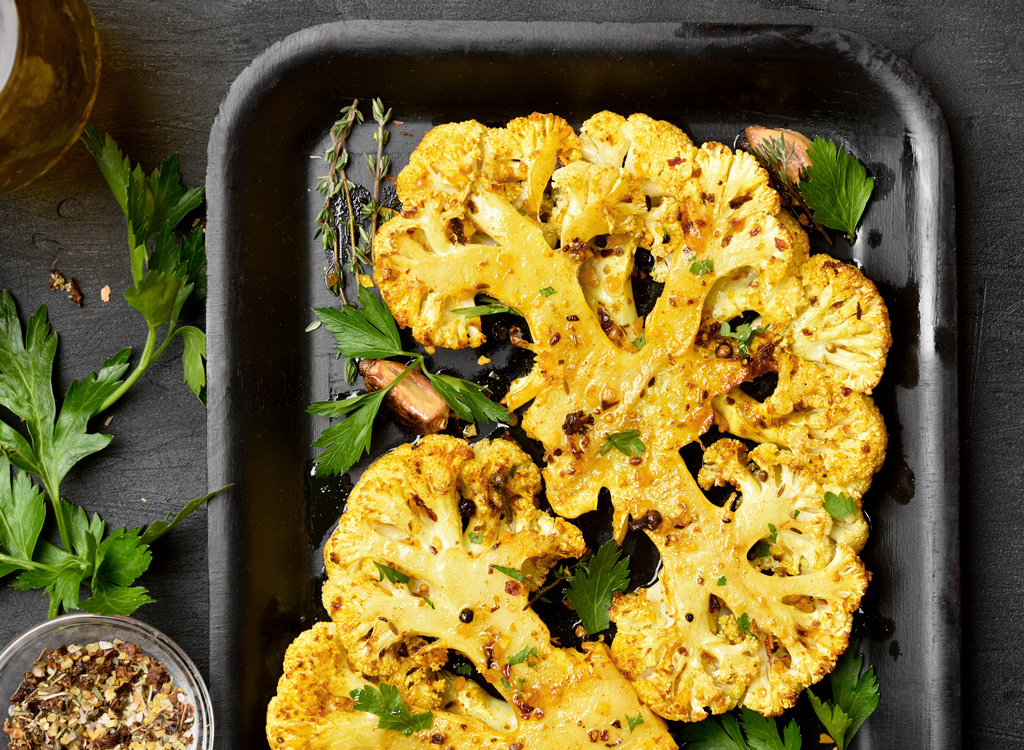
Cauliflower is rich in vitamin K, which can be a problem if you’re on certain medications, specifically blood thinners. Blood-thinning medication can interact with vitamin K, so people taking those medications are often warned by their doctors to watch vitamin K intake. Vitamin K helps your blood clot, so it’s important to keep vitamin K levels consistent when taking blood thinners so you don’t imbalance your blood.
Vitamin K and your blood thinners are actually enemies and work against each other. If you’re on blood-thinning medication, take caution with how much cauliflower you’re eating. Just 1 cup of cauliflower contains about 20% of your daily recommended intake of vitamin K, so it’s just something to be aware of.
You could lose weight.
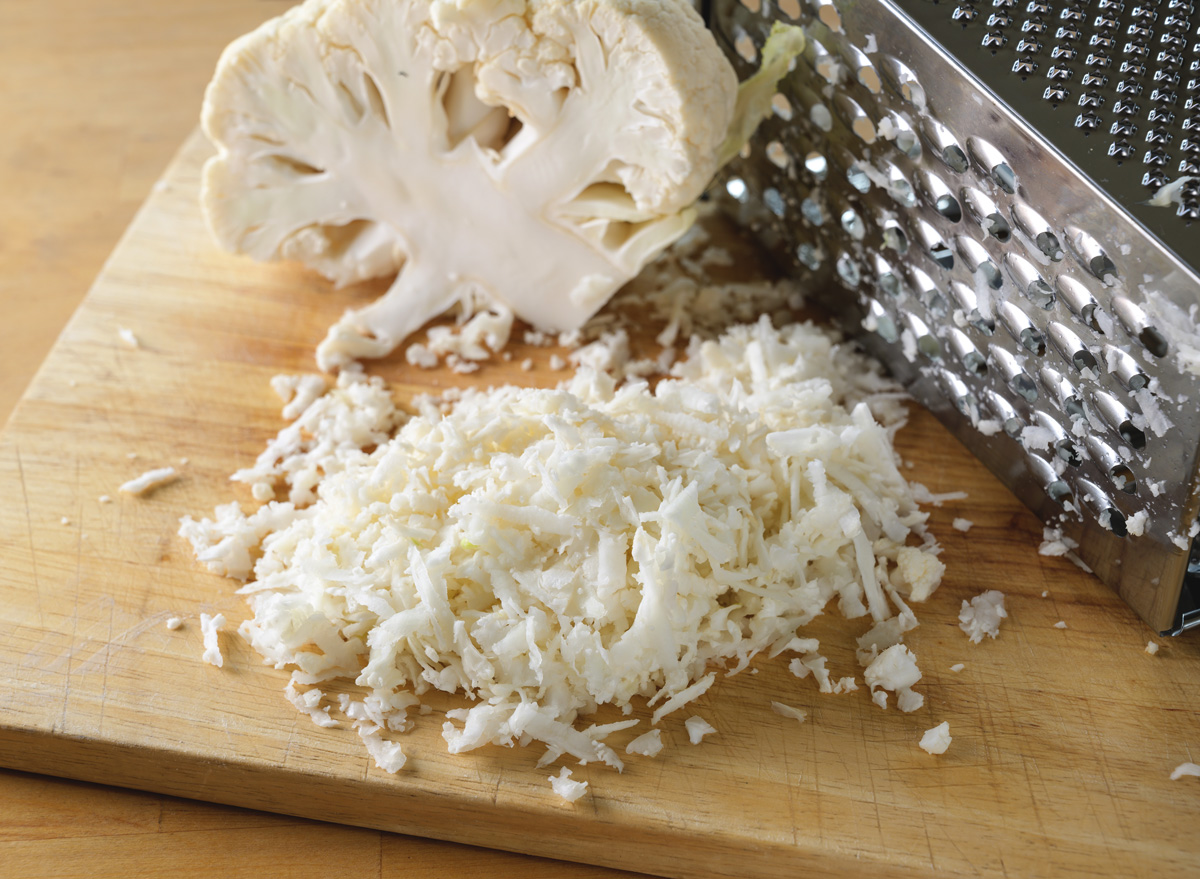
This is an incredibly broad statement, but let’s take a look at the nutritional value of cauliflower. One cup has just 25 calories, 2 to 3 grams of fiber, and a host of vitamins and nutrients (vitamins A, C, and K, potassium, folate, and more). This vegetable is also incredibly versatile when it comes to adding it into your diet. It can be used in place of grains so that your favorite foods have fewer calories.
Grating the cauliflower into rice also makes for an excellent alternative in rice-based dishes, like stir-fry. Now instead of weighing your veggies down with a grain, you’re adding more veggies into the mix.
100 Unhealthiest Foods on the PlanetWhen you swap other foods and decide to eat cauliflower instead, you’re cutting back on calories, and as long as you aren’t adding calories elsewhere, the deficit can contribute to weight loss. Pairing a healthy diet with a good exercise plan will no doubt help you lose weight.
Make cauliflower rice yourself with our easy-to-follow guide!
